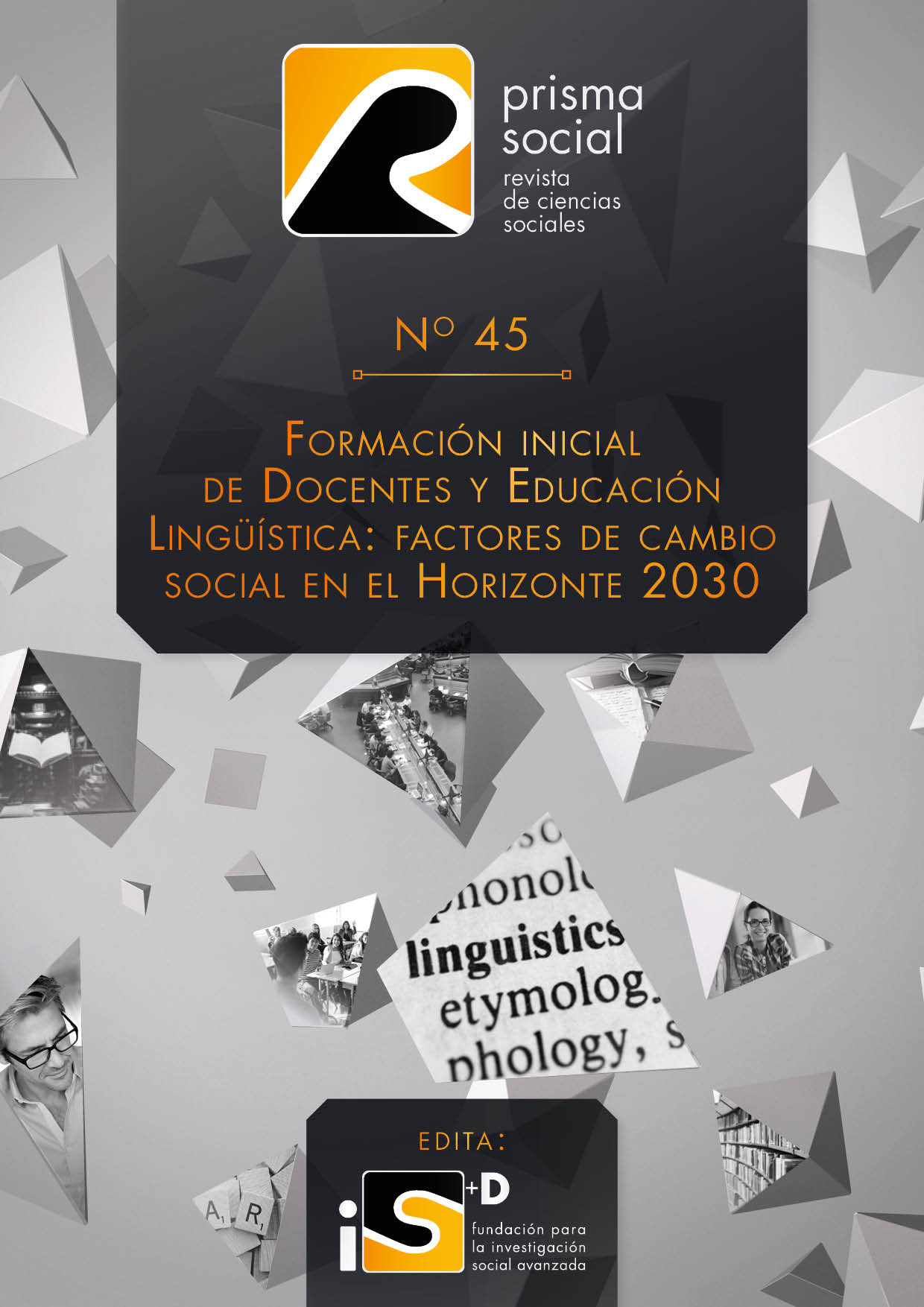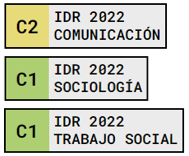Detection and action on the violence suffered by homeless women
Opening a path of light
Keywords:
Homeless women, Violence, Exclusion, SDG, ETHOSAbstract
The United Nations has long highlighted that the violence suffered by women is one of the most widespread human rights violations in the world. This violence also extends to more hidden groups such as homeless women.
This article links the 2030 Agenda, specifically the Sustainable Development Goals 1, 2, 3, 5, 8, 10 and 16, as essential elements in the processes of social intervention with homeless women, with the "Luziérnagas" program, an initiative carried out by the Luz Casanova Foundation in Madrid, to promote the social and labor inclusion of women experiencing homelessness, specifically addressing experiences of violence.
The analysis of the information collected about this program and the assessment made of it by the professionals involved, show as the main result the importance of considering the violence suffered by these women as key variables in the comprehensive processes of social intervention with them. If such violence is not addressed in depth, efforts in areas as important as work or residential areas may be put at risk.
Downloads
References
Avramov, D. (Ed.) (1997) Housing Exclusion in Central and Eastern Europe. FEANTSA.
Bourgois, P, Prince, B. y Moss, A. (2004) The everyday violence of hepatitis C among young women who inject drugs in San Francisco. Human Organization, 63(3), 253–264. https://doi.org/10.17730/humo.63.3h1phxbhrb7m4mlv0
Busch-Geertsema V., Culhane D. y Fitzpatrick S. (2016). Developing a global framework for conceptualizing and measuring homelessness. Habitat International, 55, 124–132 https://doi.org/10.1016/j.habitatint.2016.03.004
Calvo, F., Watts, B., Panadero, S., Giralt, C., Rived-Ocaña, M. y Carbonell, X. (2022). The Prevalence and Nature of Violence Against Women Experiencing Homelessness: A Quantitative Study. Violence Against Women, 28(6-7), 1464-1482. https://doi.org/10.1177/10778012211022780
Farley, M., Lynne, J. y Cotton, A. J. (2005) Prostitution in Vancouver: Violence and the Colonization of First Nations Women. Transcultural psychiatry, 42(2), 242–271. https://doi.org/10.1177/1363461505052667
FEANTSA (2007) FEANTSA Proposal: A Retrospective Module on Homelessness for Household Surveys. FEANTSA.
Flentje, A., Leon, A., Carrico, A., Zheng, D. y Dilley, J. (2016) Mental and Physical Health among Homeless Sexual and Gender Minorities in a Major Urban US City. Journal of Urban Health, 93(6), 997–1009. https://doi.org/10.1007/s11524-016-0084-3
Greenfield, B., Alessi, E. J., Manning, D., Dato, C. y Dank, M. (2021) Learning to endure: A qualitative examination of the protective factors of homeless transgender and gender expansive youth engaged in survival sex. International Journal of Transgender Health, 22(3), 316-329. https://doi.org/10.1080/26895269.2020.1838387
Hanley, J., Ives, N., Lenet, J., Hordyk, S. R., Walsh, C., Ben Soltane, S. y Este, D. (2019), Migrant women’s health and housing insecurity: an intersectional analysis. International Journal of Migration, Health and Social Care, 15(1), 90-106. https://doi.org/10.1108/IJMHSC-05-2018-0027
Herrero Fernández, I. (2003) Mujeres sin hogar y violencia de género: la triple invisibilidad. Cuadernos de Trabajo Social, 16, 265-268. https://doi.org/10.5209/CUTS.8664
Huey, L., Broll, R., Hryniewicz, D. y Fthenos, G. (2014) “They Just Asked Me Why I Became Homeless”: “Failure to Ask” as a Barrier to Homeless Women’s Ability to Access Services Post-Victimization. Violence and Victims, 29 (6). https://doi.org/10.1891/0886-6708.VV-D-12-00121
INE (2022) Encuesta a las personas sin hogar. Instituto Nacional de Estadística. https://ine.es/prensa/epsh_2022.pdf
Johnson, J.M (2002) In-Depth Interviewing. En Gubrium, J.F. y Holstein, J.A. (eds) Handbook of interview research (pp. 103-120). Sage.
Kushel, M.B., Evans, J.L., Perry, S.M., Robertson, M.J., y Moss, A.R. (2003). No door to lock: victimization among homeless and marginally housed persons. Archives of internal medicine, 163(20), 2492-2499. https://doi.org/10.1001/archinte.163.20.2492
Mostowska, M. y D?bska, K. (2020) An ambiguous hierarchy of inequalities. The political intersectionality of older women’s homelessness in Poland, Journal of Gender Studies, 29(4), 443-456, https://doi.org/10.1080/09589236.2020.1716699
Naciones Unidas (1993). Declaración sobre la eliminación de la violencia contra la mujer. https://www.ohchr.org/es/instruments-mechanisms/instruments/declaration-elimination-violence-against-women
Nyamathi A. M., Leake B. y Gelberg L. (2000). Sheltered versus nonsheltered homeless women: Differences in health, behavior, victimization, and utilization of care. Journal of General Internal Medicine, 15(8), 565–572. https://doi.org/10.1046/j.1525-1497.2000.07007.x
O’Brien, A. (2023): Homelessness as a Feminist Issue: Revisiting the 1970s, Australian Feminist Studies, 37(112), 134-151. https://doi.org/10.1080/08164649.2023.2173140
Ponce, A.N., Lawless, M.S. y Rowe, M. (2014) Homelessness, Behavioral Health Disorders and Intimate Partner Violence: Barriers to Services for Women. Community Mental Health Journal, 50(7), 831–840. https://doi.org/10.1007/s10597-014-9712-0
Price, H. y Glorney, E. (2022). The challenge to survive: trauma, violence and identity in the lived experience of homeless women. The Journal of Forensic Practice, 24(4), 436-452. https://doi-org.crai-ustadigital.usantotomas.edu.co/10.1108/JFP-04-2022-0018
Reid, N., Kron, A., Rajakulendran, T., Kahan, D., Noble, A., y Stergiopoulos, V. (2021). Promoting Wellness and Recovery of Young Women Experiencing Gender-Based Violence and Homelessness: The Role of Trauma-Informed Health Promotion Interventions. Violence Against Women, 27(9), 1297-1316. https://doi.org/10.1177/1077801220923748
Riley, E. D., Vittinghoff, E., Kagawa, R. M. C., Raven, M. C., Eagen, K, V., Cohee, A., Dilworth, S. E y Shumway, M. (2020) Violence and Emergency Department Use among Community-Recruited Women Who Experience Homelessness and Housing Instability. Journal of Urban Health, 97(1), 78–87. https://doi.org/10.1007/s11524-019-00404-x
Rosa, A. S. y Brêtas, A. C. P. (2015) A violência na vida de mulheres em situação de rua na cidade de São Paulo, Brasil. Interface: Communication, Health, Education, 19(53), 275-285. https://doi.org/10.1590/1807-57622014.0221
Rubio, E.M., García-Santesmases, A. y García-Castilla, F.J. (2024) Interseccionalidad y trabajo social: un encuentro necesario. En Rubio, E.M., Pérez-Viejo, J.M., García-Castilla, F.J. y de la Peña, L. (coords) La Interseccionalidad: un enfoque clave para el trabajo social (pp. 19-34). Dykinson.
Stake, R. E. (2005) Investigación con estudio de casos. Morata.
Tardón, B., Pérez-Viejo, J.M. y Martín de la Peña, L. (2024) Violencia hacia las mujeres y trabajo social: un enfoque interseccional para comprender sus múltiples dimensiones. En Rubio, E.M., Pérez-Viejo, J.M., García-Castilla, F.J. y de la Peña, L. (coords) La Interseccionalidad: un enfoque clave para el trabajo social (pp. 35-48). Dykinson.
Tjaden, P., & Thoennes, N. (2000). Prevalence and consequences of male-to-female and female-to-male intimate partner violence as measured by the National Violence Against Women Survey. Violence Against Women, 6(2), 142–161. https://doi.org/10.1177/10778010022181769
Tucker, J. S., Wenzel, S. L., Straus, J. B., Ryan, G. W. y Golinelli, D. (2005). Experiencing Interpersonal Violence: Perspectives of Sexually Active, Substance-Using Women Living in Shelters and Low-Income Housing. Violence Against Women, 11(10), 1319-1340. https://doi.org/10.1177/1077801205280190
Wells, K. (2011). A Narrative Analysis of One Mother’s Story of Child Custody Loss and Regain. Children and Youth Services Review, 33 (3), 439–447. https://doi.org/10.1016/j.childyouth.2010.06.019
Wesely, J. K. (2006). Considering the Context of Women’s Violence: Gender, Lived Experiences, and Cumulative Victimization. Feminist Criminology, 1(4), 303-328. https://doi.org/10.1177/1557085106293074
Wenzel, S. L., Koegel, P. y Gelberg, L. (2000) Antecedents of physical and sexual victimization among homeless women: A comparison to homeless men. American Journal of Community Psychology, 28(3), 367–390 https://doi.org/10.1023/A:1005157405618
Yin, R. K. (2012) Applications of case study research. Sage.
Zufferey, C. (2017) Homelessness and Social Work: An Intersectional Approach. Routledge.
Downloads
Published
How to Cite
Issue
Section
License
Copyright (c) 2024 Revista Prisma Social

This work is licensed under a Creative Commons Attribution-NonCommercial-NoDerivatives 4.0 International License.
Those authors who publish in this journal accept the following terms:
-
Authors retain copyright.
-
Authors transfer to the journal the right of first publication. The journal also owns the publishing rights.
-
All published contents are governed by an Attribution-NoDerivatives 4.0 International License.
Access the informative version and legal text of the license. By virtue of this, third parties are allowed to use what is published as long as they mention the authorship of the work and the first publication in this journal. If you transform the material, you may not distribute the modified work. -
Authors may make other independent and additional contractual arrangements for non-exclusive distribution of the version of the article published in this journal (e.g., inclusion in an institutional repository or publication in a book) as long as they clearly indicate that the work was first published in this journal.
- Authors are allowed and recommended to publish their work on the Internet (for example on institutional and personal websites), following the publication of, and referencing the journal, as this could lead to constructive exchanges and a more extensive and quick circulation of published works (see The Effect of Open Access).


















